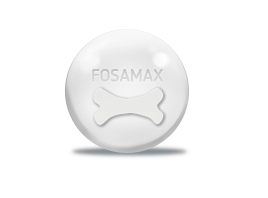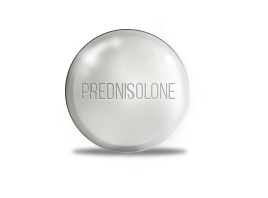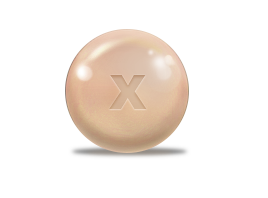Cordarone - antiarrhytmic drug of III class (repolarization inhibitor). Possesses also anti-anginal, coronarodilator, alpha and beta, adrenoceptor blocking and hypotensive action. The anti-anginal effect of Cordarone is caused by coronarodilator and anti-adrenergic action, reduction of need of a myocardium for oxygen.

Diflucan - antifungal medicine, possesses highly specific action, inhibiting activity of enzymes of fungus. It is taken at systemic lesions caused by fungus including meningitis, sepsis, infections of lungs and skin as at patients with a normal immune response, and at patients with various forms of immunosuppression.

Doxycycline is a semi-synthetic antibiotic of a broad spectrum of tetracyclines. Causes bacteriostatic action by suppressing protein synthesis of pathogens as a result of blocking the aminoacyl transport RNA (tRNA) with the "information RNA (rRNA) complex" ribosome.

Erythromycin is a macrolide antibiotic of bacteriostatic action. In high concentrations and relatively high-sensitivity microorganisms may have a bactericidal effect.

Estrace - oestrogenic drug - 17 - beta oestradiol which is identical to endogenous oestradiol (which is formed in an organism of women, since the first menstrual period up to a menopause), developed by ovaries. Exerts feminizing impact on an organism. Stimulates development of a uterus, uterine tubes, vaginas, stroma and channels of mammary glands, pigmentation in nipples and generative organs, formation of secondary sexual characteristics on female type, growth and closing of epiphysis of long tubular bones.

Eulexin - antineoplastic medicine, anti-androgen. Competitively blocks interaction of androgens with their cellular receptors; interferes with manifestation of biological effects of male sex hormones in androgensensetive organs. It is taken for palliative treatment of cancer.

Exforge the combined antihypertensive which includes amlodipine and valastran. Valsartan - a specific blocker of AT1 receptors of angiotensin II. Amlodipin - calcium channel blocking agents of III generation, inhibits transmembrane receipt of Ca2+ in cardiomyocytes and smooth muscle cells of vessels, by weakening them.

Floxin - antimicrobic broad-spectrum agent from group of fluroquinolone. It is active concerning the microorganisms producing beta lactamelements and fast-growing atypical mycobacteria. It is taken at respiratory infection, the ENT organs, skin, soft tissues, bones, joints, abdominal cavity, urinary tract.

Fosamax - drug for treatment of Paget disease, osteoporosis at women in a postmenopause, osteoporosis at men, a hypercalcemia at malignant tumors. Active alendronate ingredient - non-hormonal specific inhibitor of an osteoclastic bone resorption, suppresses osteoclasts. Taking of Fosamax stimulates bone formation, recovers positive balance between a resorption and recovery of a bone, progressively increases the mineral density of bones, promotes formation of a normal bone tissue with normal histologic structure.

Thiol derivative, a competitive hypoxanthine antagonist, has an immunosuppressive and cytostatic effect. It is used for prevention of rejection reaction in kidney transplantation, treatment of rheumatoid arthritis, chronic active hepatitis, SLE, dermatomyositis, periarteritis nodosa, acquired hemolytic anemia, gangrenous pyoderma, psoriasis, Crohn's disease, ulcerative colitis and myopathy.

Antiepileptic agent. The use of Lamictal reduces the pathological activity of neurons without inhibiting their function. Stabilizes the neuronal membranes by affecting Na + channels, blocks excessive release of excitatory amino acids (mainly glutamate), without reducing its normal release.

"Loop" diuretic, used for edematous syndrome with CHF II-III st., liver cirrhosis, kidney disease; swelling of the lungs or brain; arterial hypertension, hypercalcemia. Causes a rapidly advancing, strong and short-term diuresis. Has natriuretic and chlororetic effects, increases the excretion of K +, Ca2 +, Mg2 +.

An antimicrobial agent from the nitrofurans group, especially suitable for the treatment of urinary tract infections and prevention of infections after urologic surgery or examinations (cystoscopy, catheterization, etc.). The medicine disrupts the permeability of the cell membrane and protein synthesis in bacteria.

A thiazide diuretic of the average intensity, applied in arterial hypertension, edema syndrome of different origin, gestosis and diabetes insipidus. Reduces reabsorption of Na+ at the level of the Henle loop cortical segment, without affecting its segment lying in the medulla of the kidney that detects a weaker diuretic effect compared with furosemide.

The antifungal agent which has activity against dermatophytes, yeasts, dimorphic fungi and eumycetes. It is also active against staphylococci and streptococci. The therapeutical indications of the drug include: mycoses of the gastrointestinal tract, eyes, genital organs, chronic recurrent vaginal candidiasis, dermatomycosis, onychomycosis, Candida, folliculitis, dermatophytosis, systemic fungal infections (blastomycosis, candidiasis, paracoccidioides, coccidioidomycosis, cryptococcosis, histoplasmosis, hromomikoz, sporotrichosis, paronychia, fungal sepsis, fungal pneumonia); leishmaniasis; tinea versicolor, prevention of fungal infections in patients with a high risk of their development. The mechanism of action is inhibition of fungal membrane ergosterol synthesis and the violation of the cell wall permeability.

An antimicrobial agent from the fluoroquinolone group. It has a broad spectrum of antibacterial action. The therapeutical indications include bacterial infection of the urinary tract (pyelonephritis, cystitis, urethritis), genitals (prostatitis, cervicitis, endometritis), gastrointestinal tract (salmonellosis, shigellosis), uncomplicated gonorrhea. Also used to prevent infections in patients with granulocytopenia, diarrhea of travelers.

A tricyclic antidepressant with a relatively short latency period. It has almost no sedative effect. therapeutical indications include: depressive phases of a manic-depressive psychosis, all other forms of endogenous depression (reactive and neurotic). In combination with amitriptyline it is used for depressions that occurred during treatment with reserpine. In combination with neuroleptics, it is used in the treatment of depression that developed during treatment of schizophrenic psychoses.

A lipid-lowering agent. Reversibly inhibits HMG-COA reductase, inhibits the cholesterol synthesis at the stage of mevinolinic acid and moderately reduces its intracellular concentration. The indications for the drug use include: primary hypercholesterolemia mainly of IIa and IIb types, under the ineffective diet treatment in patients with increased risk of coronary atherosclerosis, hypercholesterolemia combined with hypertriglyceridemia; prevention of coronary artery disease. The drug decreases the risk of myocardial infarction, the need for revascularization of the myocardium, deaths from cardiovascular system diseases.

Prednisolone is a synthetic analogue of the adrenal cortex secreted by the hormones cortisone and hydrocortisone. Unlike cortisone and hydrocortisone, prednisolone does not cause a noticeable delay in sodium and water, and only slightly increases the release of potassium. The drug has a pronounced anti-inflammatory, antiallergic, anti exudative, anti-shock, antitoxic effect.

An anti-climax combined drug which has estrogenic and gestagenic effect, restores the balance of endogenous hormones.
Estrogens regulate the development of the female reproductive system functions’ preservation, the formation of female secondary sex characteristics. The list of indications includes: vasomotor symptoms associated with estrogen deficiency in the body, osteoporosis associated with estrogen deficiency, atrophic urethritis and atrophic vaginitis.

Tenorminis a cardioselective beta-adrenoblocker. It is based on a substance called Atenolol, which blocks nerve impulses, which leads to a decrease in the frequency and strength of the heartbeat. Atenolol has antihypertensive (lowers pressure), antianginal (eliminates the symptoms of myocardial ischemia) and antiarrhythmic (eliminates heart rhythm disturbances) by action.

Tricor - is a hypolipidemic agent, has an uricosuric and antiplatelet effect. In combination with diet therapy, the drug is prescribed for a long-term treatment, the effectiveness of which must be periodically checked by determining serum lipid levels.

Uroxatral - Alfuzosinis an active substance, as an antagonist of the α1 adenogenetic receptor, this drug relaxes the muscles of the prostate and the bladder. Used in the treatment of benign prostatic hyperplasia (BPH). Reduces pressure in the urethra and reduces resistance to urine flow, eases urination and eliminates dysuria.

Zestoretic - tablets containing 12,5Mg of Hydrochlorothiazide and 10Mg of Lisinopril, as active ingredients. It is hypotensive, vasodilating, natriuretic, cardioprotective medical preparation.The drug is used to treat arterial hypertension, also in order to reduce the risk of cardiovascular disease and mortality in patients with hypertension and left ventricular hypertrophy, manifesting cumulative reduction in the incidence of cardiovascular death, incidence of stroke and myocardial infarction.

Zithromax - antibiotic of a wide spectrum of action. Antibiotic-azalide, a representative of a new subgroup of macrolide antibiotics. In the focus of inflammation it has a bactericidal effect. For the active ingredient of Zithromax, Azithromycin, all the gram-positive cocci (except those bacteria which are resistant to erythromycin) are susceptible.

is given to patients for treating severe acne that do not respond to other medicines

























